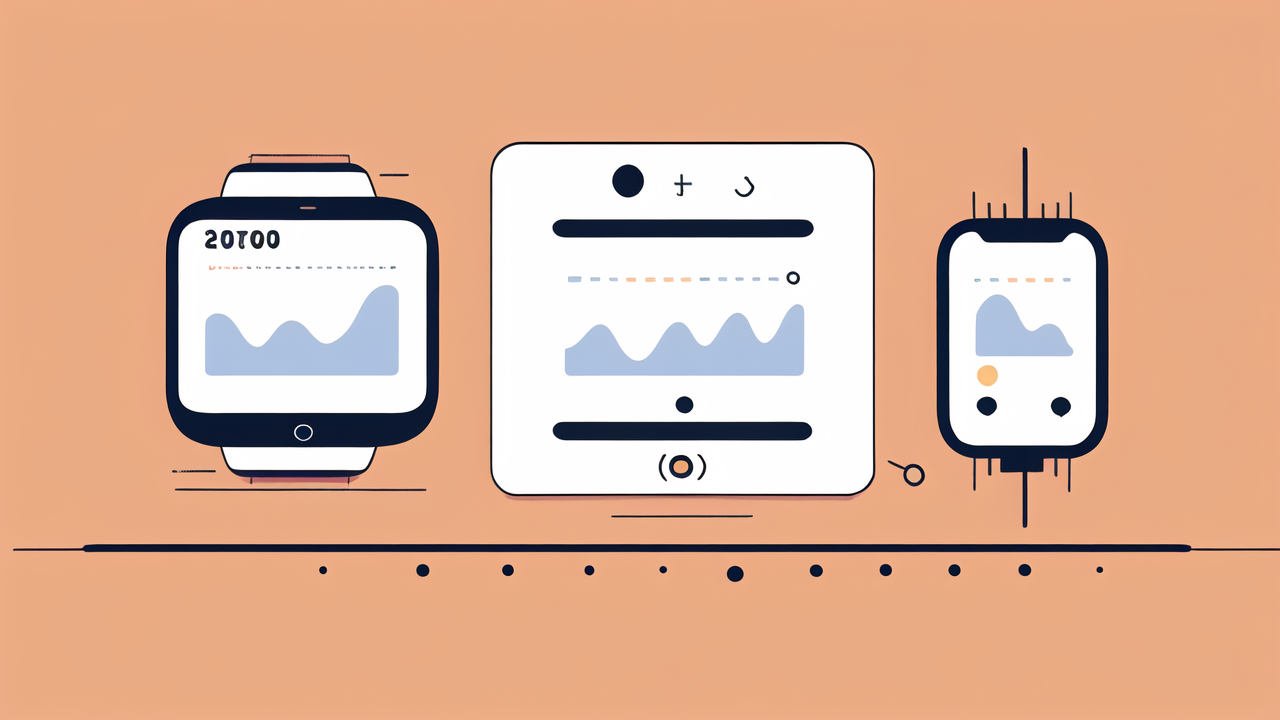The Rise of Wearable Fitness Technology in the United States
Understanding the Growth of the Fitness Wearables Market
The fitness wearables market has seen incredible growth in recent years. This surge is driven by increased health awareness and tech adoption. Consumers now prioritize tracking their fitness and wellness goals.

Activity trackers have evolved from simple step counters to sophisticated devices. They now monitor heart rate, sleep patterns, and even stress levels. This expansion in features has widened their appeal.
The market has also benefited from improvements in battery life and design. Devices are now more comfortable and stylish, encouraging daily wear. As a result, the user base has grown beyond fitness enthusiasts to include casual users.
Key Players and Innovations Driving the Industry
Several companies have emerged as leaders in the activity tracker market. Fitbit, Apple, and Garmin are among the top players. Each brings unique innovations to the table.
Fitbit popularized the concept of step tracking and gamification of fitness goals. Apple integrated activity tracking into its smartwatch, offering a seamless user experience. Garmin focuses on specialized features for athletes and outdoor enthusiasts.
Innovations in sensor technology have expanded tracking capabilities. New devices can measure blood oxygen levels, detect falls, and even monitor heart rhythm. These advancements have made activity trackers valuable health monitoring tools.
Regulatory and Ethical Considerations in Wearable Fitness Devices
As activity trackers collect more health data, regulatory oversight has increased. The FDA now classifies some devices as medical devices, subject to stricter rules.
Privacy concerns have also come to the forefront. Users want assurance that their personal health data is secure and not misused. Companies must navigate complex data protection laws and ethical considerations.
There's ongoing debate about the accuracy of these devices for medical purposes. While they can provide valuable insights, they are not substitutes for professional medical advice. Balancing innovation with responsible use remains a key challenge for the industry.
Integrating Fashion and Functionality in Activity Trackers
How Smartwatches and Wearable Fashion Are Converging
The line between fashion accessories and activity trackers is blurring. Smartwatches now come in stylish designs that rival traditional timepieces. This shift has made them more appealing to a broader audience.

Fashion brands are entering the market, collaborating with tech companies. These partnerships result in devices that are both functional and fashionable. Users no longer have to choose between style and fitness tracking.
Customization options have also expanded. Interchangeable bands and watch faces allow users to personalize their devices. This flexibility helps activity trackers fit seamlessly into various lifestyles and outfits.
The Role of Design in User Adoption and Engagement
Design plays a crucial role in the adoption of activity trackers. Sleek, comfortable designs encourage consistent wear. This is essential for accurate tracking and long-term engagement.
User interfaces have become more intuitive and visually appealing. Clear, easy-to-read displays make it simple to check progress at a glance. This accessibility helps users stay motivated and engaged with their fitness goals.
Manufacturers are also focusing on durability and water resistance. These features allow users to wear their devices during various activities. The ability to track workouts without worry about damage has increased user satisfaction.
The Impact of Wearable Fashion on the Activity Tracking Ecosystem
The fusion of fashion and technology has expanded the activity tracker ecosystem. New players from the fashion industry are entering the market. This diversity is driving innovation in both design and functionality.
Wearable fashion has also influenced how activity data is displayed and shared. Social media integration allows users to showcase their achievements in style. This trend has created a new form of digital self-expression tied to fitness.
The fashion aspect has helped normalize the constant wearing of trackers. As devices become more fashionable, they're seen less as gadgets and more as everyday accessories. This shift is crucial for collecting consistent, long-term health data.
Future Trends in Activity Tracking Technology
Advancements in Battery Life and Connectivity
Improving battery life is a key focus for future activity trackers. Longer-lasting devices mean less frequent charging and more consistent use. New battery technologies and power-efficient designs are in development.

Connectivity is also evolving. 5G networks will enable faster data transfer and real-time tracking. This could lead to new features like instant health alerts or live coaching during workouts.
Wireless charging is becoming more common in activity trackers. This convenience factor could further boost adoption rates. Some companies are even exploring solar-powered options for extended battery life.
The Integration of AI and Machine Learning in Wearable Fitness Devices
Artificial intelligence is set to revolutionize activity tracking. AI can analyze patterns in user data to provide personalized insights and recommendations. This could help users optimize their fitness routines and overall health.
Machine learning algorithms can improve the accuracy of activity recognition. Future devices may automatically detect and log different types of exercises. This would make tracking more seamless and reduce the need for manual input.
AI could also enhance the predictive capabilities of activity trackers. By analyzing trends, devices might warn users of potential health issues before they become serious. This proactive approach could transform preventive healthcare.
Potential New Markets and Applications for Activity Trackers
The healthcare sector presents a significant opportunity for activity trackers. Devices could be used for remote patient monitoring and chronic disease management. This could lead to more personalized and efficient healthcare delivery.
Activity trackers are finding applications in workplace wellness programs. Companies are using them to promote employee health and reduce healthcare costs. This trend is likely to grow as the benefits become more apparent.
The integration of activity trackers with smart home systems is another emerging trend. Devices could adjust home environments based on user activity levels and sleep patterns. This seamless integration could enhance overall wellness and comfort.




Leave a comment
This site is protected by hCaptcha and the hCaptcha Privacy Policy and Terms of Service apply.